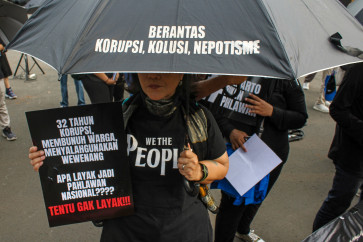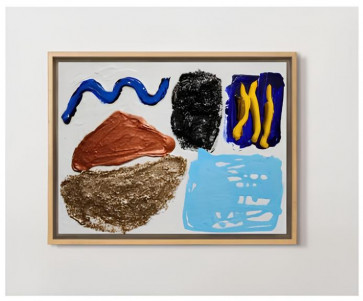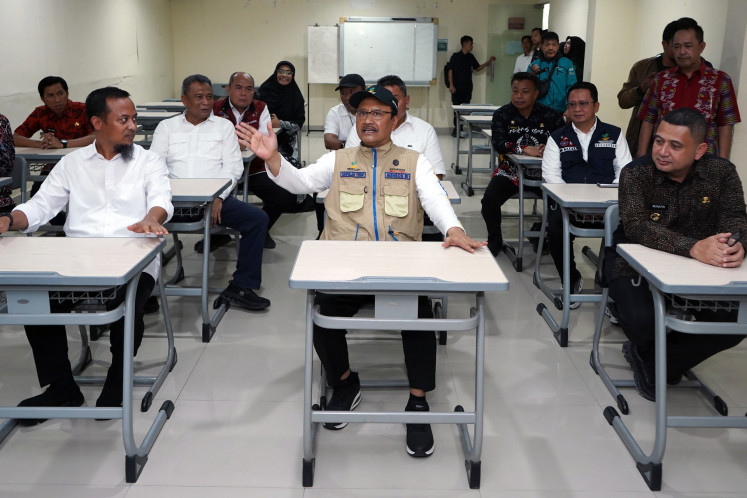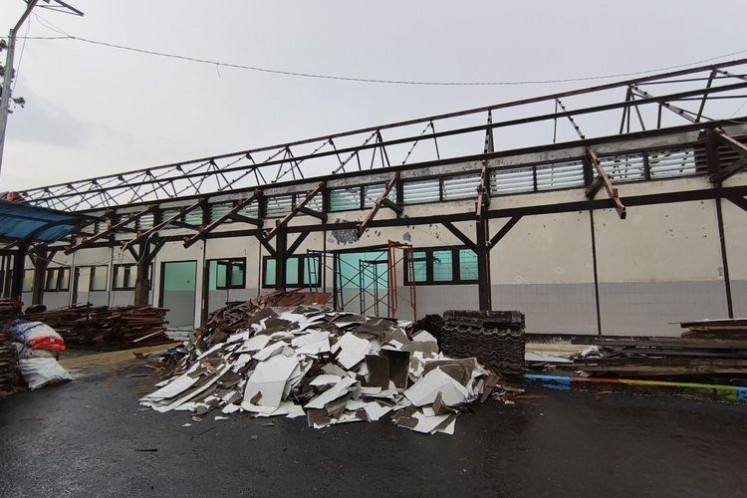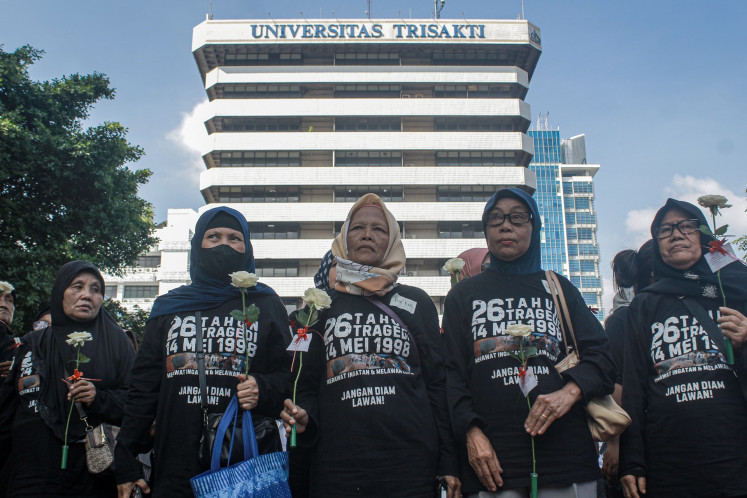Indonesia opens first plantation museum
Old crop duster: Visitors pose in front of the Indonesian Plantation Museum in Medan on Saturday
Change text size
Gift Premium Articles
to Anyone

O
span class="caption">Old crop duster: Visitors pose in front of the Indonesian Plantation Museum in Medan on Saturday. The museum, inaugurated by the government recently, houses items that tell the history of the country’s plantations.(JP/Apriadi Gunawan)
After a long wait, the country finally opened its first plantation museum at the Palm Oil Research Center (PPKS) office complex in Medan, North Sumatra, on Saturday, to coincide with the commemoration of National Plantation Day.
The Agriculture Ministry’s director general for plantations, Bambang, who attended the inauguration ceremony, hoped that the future of plantations in Indonesia would be better as the country now had its own plantation museum.
He also said that he wanted to see plantations making a significant contribution to the country.
“I hope the country’s plantations can produce commodities with economic value, such as industrial raw materials and sources of energy, as well as producing commodities that can help maintain environmental sustainability,” Bambang said.
Chairman of the board of founders of the Indonesian Plantation Museum (Musperin), Soedjai Kartasasmita, who initiated the plantation museum project, said the museum was created to acknowledge North Sumatra as the first center of commercial plantations in the country.
“North Sumatra, once was East Sumatra, is the first center of commercial plantations in Indonesia,” Soedjai said.
He added that the museum was built on land where the first plantation research institution in Sumatra was located. The research institution was constructed in 1916.
North Sumatra Governor Tengku Erry Nuradi hoped that the museum could educate the public about the history of plantations in Indonesia and the role of North Sumatra in that history.
“North Sumatra became and is still the center of big plantations in the archipelago,” he said as quoted by news agency Antara. He added that with the opening of the museum, the province now had 21 museums.
The plantation museum consists of outdoor and indoor exhibition spaces.
The Piper Pawnee airplane, produced in 1958, is displayed in the outdoor space.
The plane was used for 49 years from 1958 to 2007 by state-owned plantation company PT Perkebunan Nusantara II to spray tobacco plants with insecticide.
A Ducro & Brauns locomotive, produced in 1940 in the Netherlands, is also displayed in the outdoor space.
The locomotive was last used in May 1996 by state-owned plantation company PT Perkebunan Nusantara IV.
Among the museum’s collection is also a train made in Germany, which was used by plantation company PT Socfin Indonesia to transport oil palm fruits produced in Aek Loba plantation in Aceh from 1982 to 2015.
Meanwhile, the museum’s indoor space consists of a two-story building. The first floor of the building displays various graphics on plantations and the second floor exhibits a variety of plantation artifacts.
Museum secretary Erond Damanik explained that it took six years to gather all of the pieces of the museum’s collection until it could finally open for public.
Antara reported that there were several big plantation companies in the province, either state-owned or private, currently operating in the province.
The total plantation area run by the companies across the province is about 2.1 million hectares.


